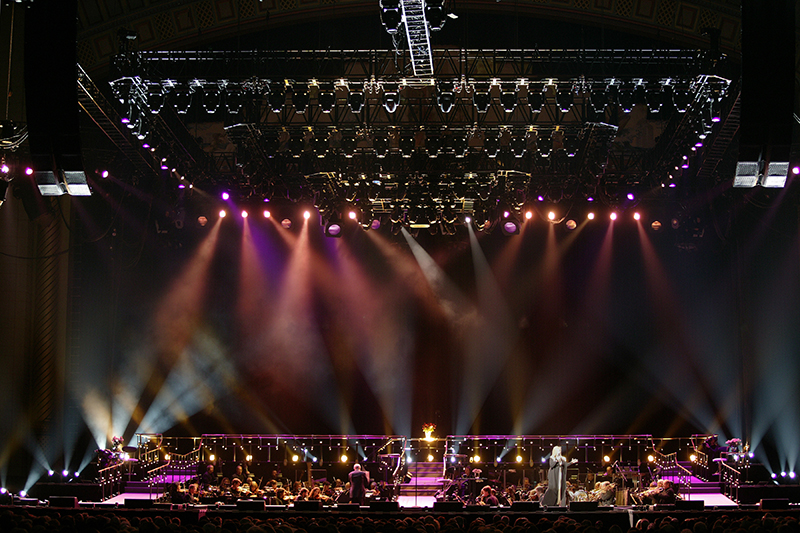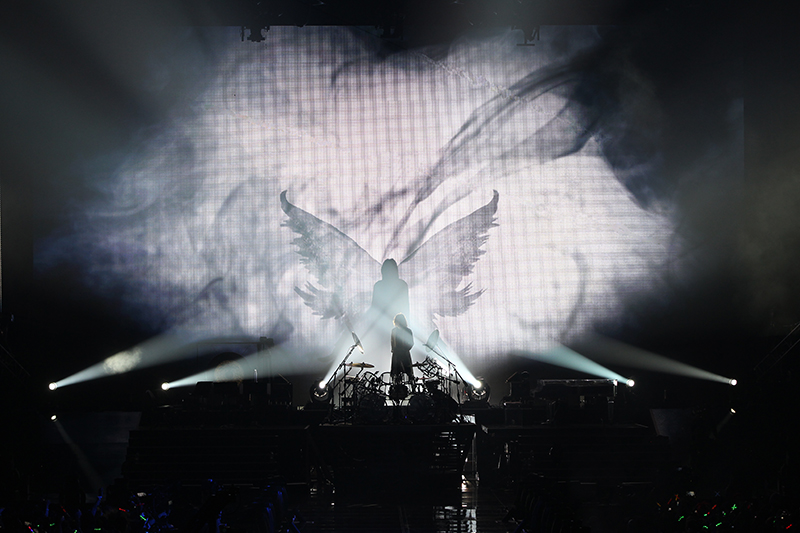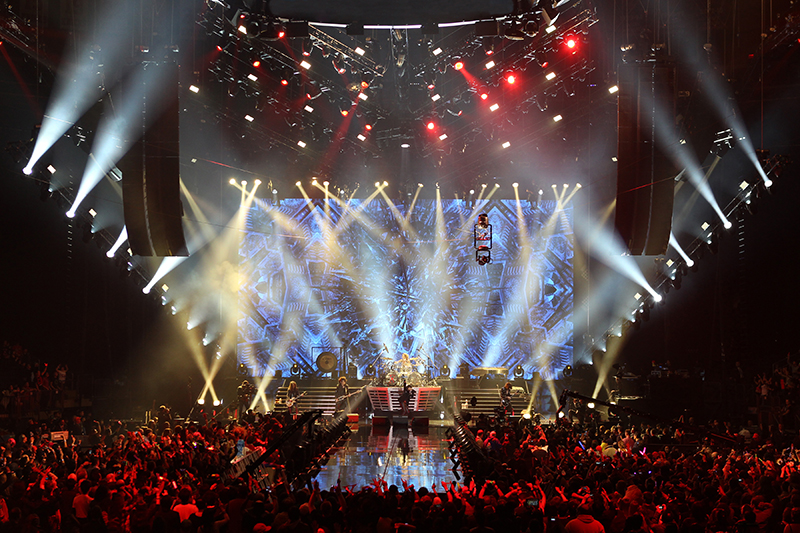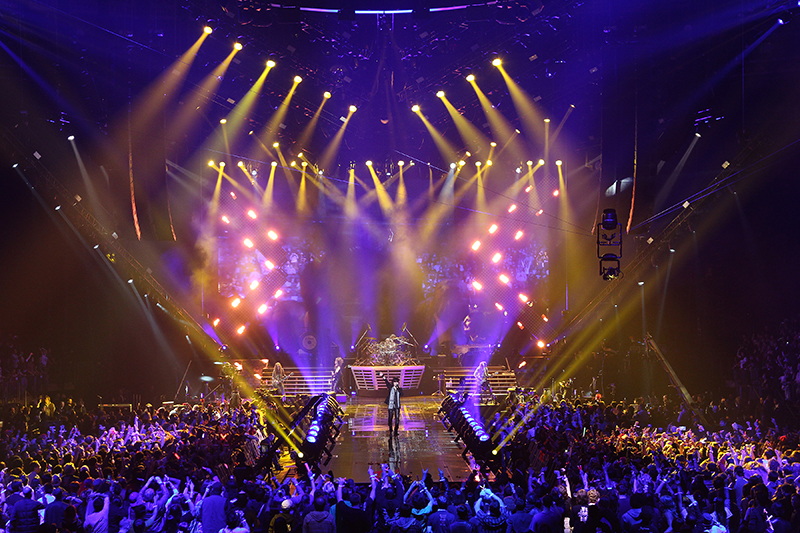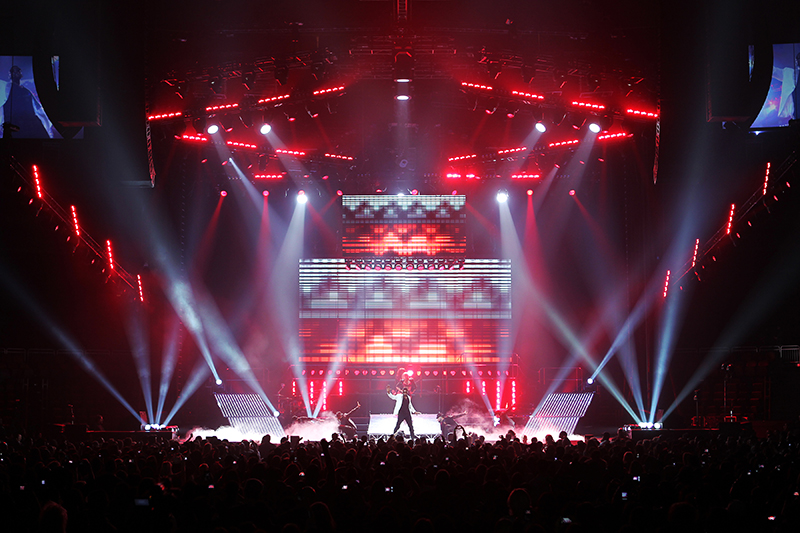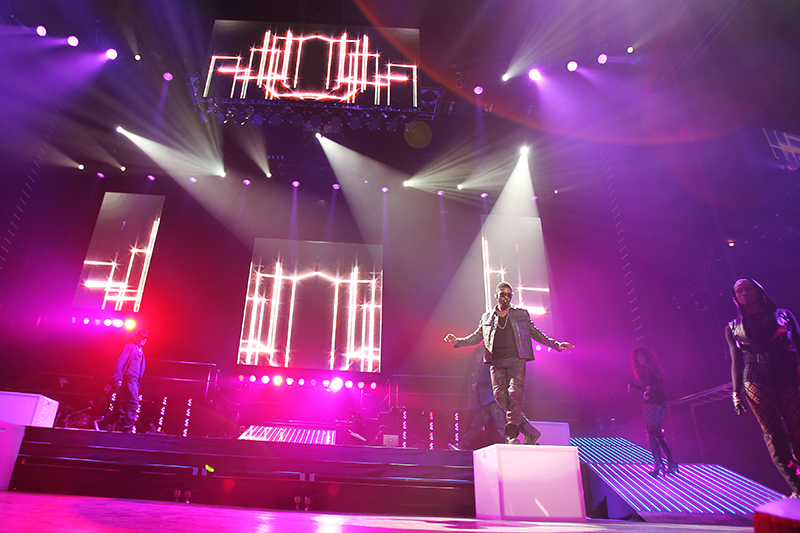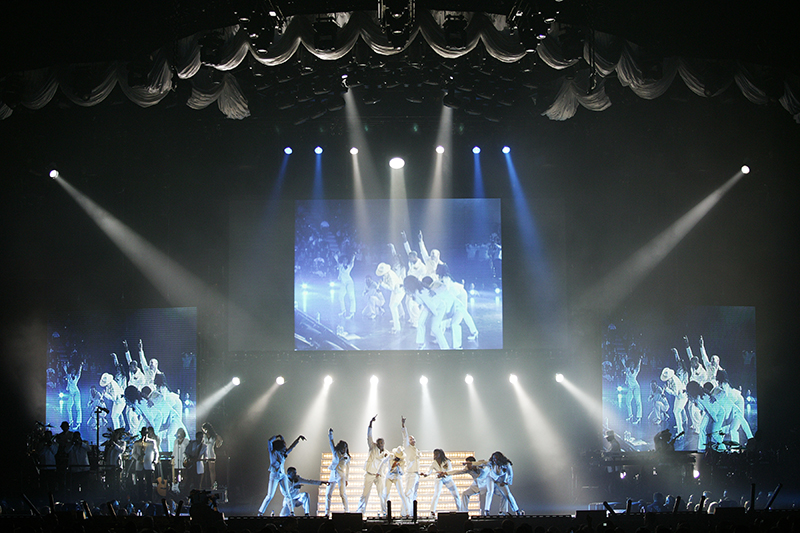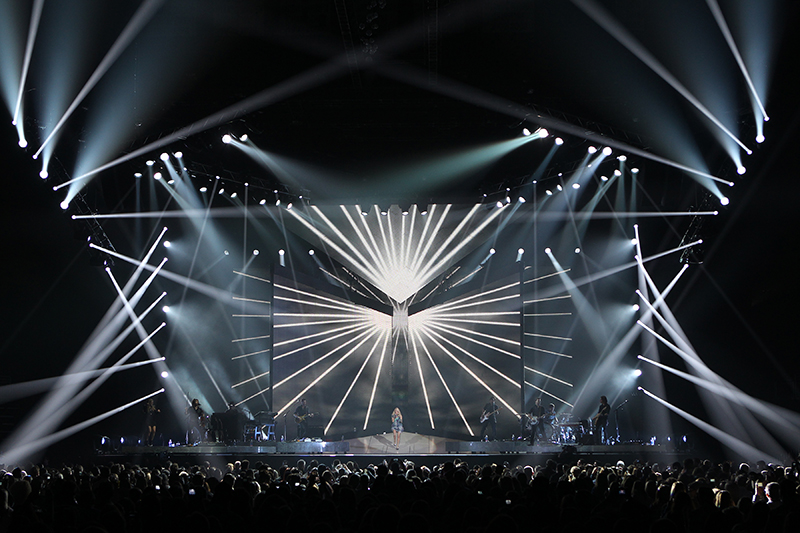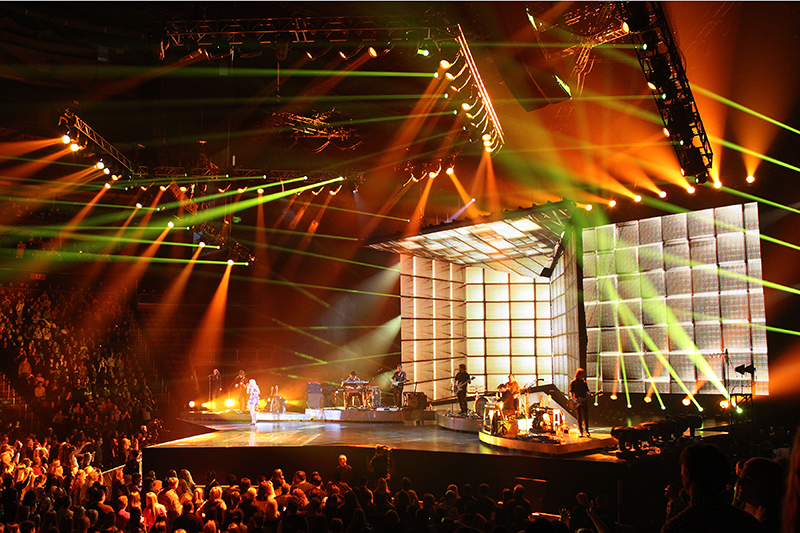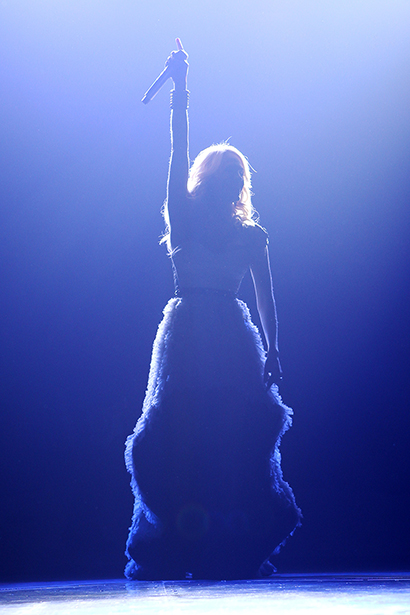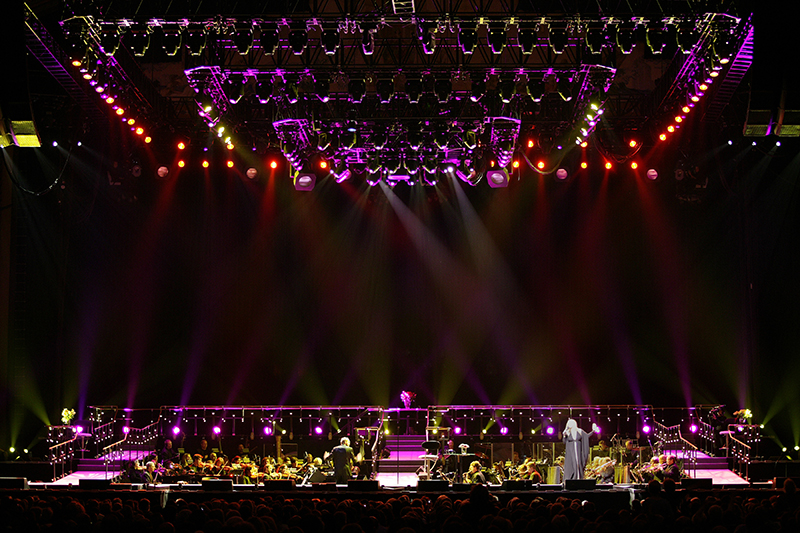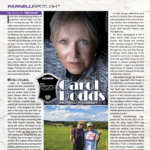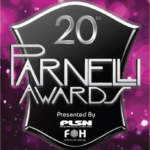20th Annual Parnelli Visionary Honoree

For this year’s 20th Annual Parnelli Awards, on Friday, June 3, the Parnelli Visionary Award will be presented to Designer Peter Morse. This Parnelli Visionary has received quite a few other awards and nominations during his illustrious career: He was named the Parnelli Lighting Designer of the Year in 2004 and won four Cable Ace Awards; two LDI Awards; a Performance Magazine Award; was nominated for an Emmy in 1995, 1997, 2000, 2001; and won the Emmy in 1997 for Bette Midler’s Diva, Las Vegas HBO Special. Morse will now add the Parnelli Visionary Award for his extraordinary career lighting some of the biggest musical artists of our time and influencing scores of designers who came after him. Here’s a look at his lighting design career.
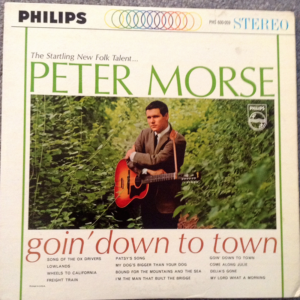
Folk Beginnings
Originally from Chicago, Morse took up the guitar as a young teen and by the age of 16, had cut his first folk album for Philips Records. After his sophomore year of college, he dropped out and moved to New York. Morse sang with The New Christy Minstrels from 1965 to 1967.
Later, living and working in L.A., Morse continued to record, write, and work as a session singer. He also worked for a college concert booking agency and traveled as the agency’s rep. The condition was he brought his guitar and would open for acts like the Cowsills and Helen Reddy whenever possible. One of those acts was Mac Davis. “As Mac’s career grew, he hired me as his tour manager.” A while later, Davis instructed Morse to hire someone to do lights for him at $500 a week. Morse announced that he did lights. “I had never done lighting in my life.” His career as an LD had begun.
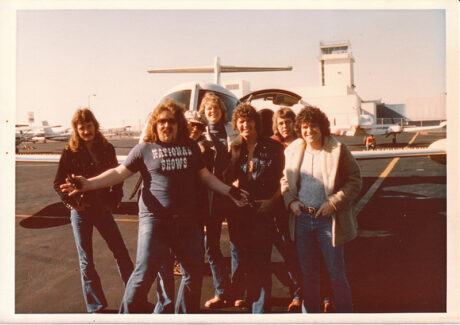
But Morse’s self-education of lighting began watching his mom paint, seeing what she did with colors; grounding him in the basics. Now, in preparation for each evening’s concert, he went into venues during the day and asked the local tech a lot of questions—often pretending he knew more than he did. His ruse involved saying, “Oh what is that? I can’t tell from here… an Altman 6×12? Okay then what happens when you point it over there?”—and that’s how he learned the basics of lighting. The on-the-job training with Davis came fast and furious.
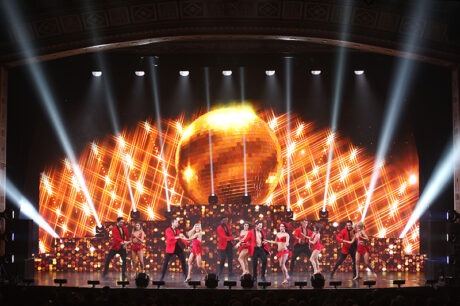
Viva Las Vegas
In 1974, Davis got a television variety show on NBC. Through this Morse became friendly with guest Loretta Lynn who hired him to design her Las Vegas show. Morse was one of the first to shun the house lights, bringing in a set he designed and an outside lighting rig with terrific results. “The big leap was scripting her show and directing which songs to do,” he says.
Davis would do a stint in Las Vegas too, at the MGM. Due to the large scale of the production, Frank Sinatra’s LD, Bob Kiernan, was asked to put together the design, sidelining Morse. There was no extra day between when the previous show closed and Davis’ was to debut, and Morse was studying what Kiernan was doing with the idea that he would eventually take over. “But Kiernan had had a bad night with Sinatra who was also performing in Las Vegas and had to remain on Sinatra’s stage to fix those lights. Then he never showed up on our set,” he says. He stayed up all night and somehow by sound check the next afternoon, it worked. “I learned a helluva lot about production, lighting, and cueing that night. And I still cringe to think I tried cross-lighting Mac at one point with a green special on the left and magenta on the right—eventually I learned that’s only good for Disney animatronics.”
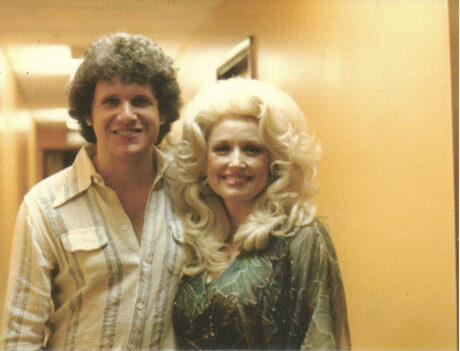
In 1978, it was back with Davis on tour, this time with Dolly Parton as the opening act, and Morse lit both, “carrying four Genie towers, one in each corner, supporting a bunch of PAR cans.” During this tour his recently recorded album was released, and Parton “heard my album and told me I shouldn’t be doing lights, I should be singing!” he says laughing. But a paradigm shift had happened: the fact is he was enjoying making a good living lighting.
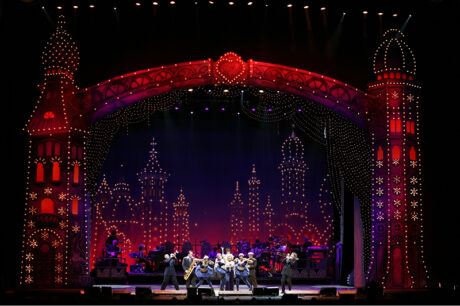
First Hired, First Fired
Morse had met Tina Turner in 1974 when she called him about one of his songs, “Bayou Song.” “She recorded it, we became friendly, and later I found myself staging, producing, and lighting for Tina.” He was with her from 1977 to 1983 and designed her world tour in 1993/1994. This initial work with Turner led to him lighting The Pointer Sisters, Michael Bolton, Lionel Richie, and Kim Carnes. Madonna’s agent caught a Carnes concert Morse had designed and directed. “He brought me to Madonna for a meeting regarding her first tour, which was just in the beginning planning stages.”
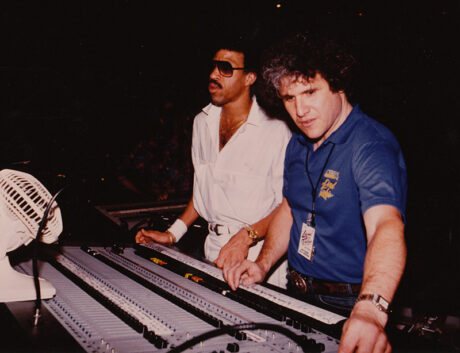
At their first meeting, Morse suggested a set idea for her tour. She liked the idea and asked him to draw a rendering for her to look at. He had an artist create a rendering with his direction. Once completed, Morse went to the recording studio where she was working on her debut album, Like a Virgin. He showed her his drawing of what her show would look like. She loved it, but said she needed to see herself on the stage. Morse dutifully pointed to a couple of the main spots she would go to sing various songs. Not good enough—and she once again stressed “I need to see ME.” “So, I took a pencil and drew a stick figure.” He was fired. “I was the first hired and the first fired on that tour!” he says with a laugh.
Next up was designing and directing Richie’s next tour. At that moment, Richie and Madonna shared a manager who, impressed with Morse’s work for Richie, went back and convinced Madonna to hire him back. “I ended up being brought in at the last minute to ‘salvage’ the lighting for Madonna’s Who’s That Girl tour. This eventually led to me designing and LD’ing her Blond Ambition, The Girlie Show, and Drowned World tours. Madonna was the first performer I saw that looked at a performance as an opportunity to use the theatrical influence in a rock/pop production instead of just a band and lead singer on stage playing songs.” In spite—or perhaps because of—her reputation for being “difficult,” Morse’s long run with Madonna further added to his reputation. And it prepped him for other notoriously challenging acts including Prince and the Eagles. He tells the story of Joe Walsh getting in his face about something, and when Walsh paused to say, “I hope I’m not rattling you,” Morse replied: “I was with Madonna for 14 years—I don’t get rattled.”
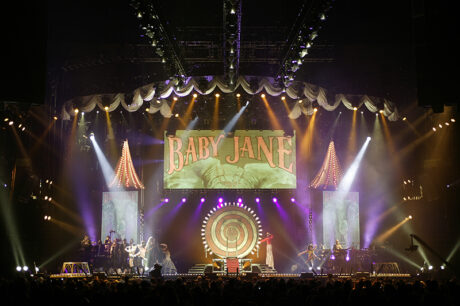
“A Lighting Designer’s Dream”
For 1990’s Blond Ambition tour, technological advancements met an artist with a big vision, and the concert was divided into five distinctly different thematic segments. “We were working with practically 100% movers; an all-Morpheus system,” Morse explains. “That gear was revolutionary at the time and evolving daily. You had to learn it on the run.” It was the early days of dedicated programmers, so Morse himself maintained shutter, pan, and tilt override control with a manual console, while the programmer/operators would establish the base positions, color, etc., that he required. “I had a good selection of fixtures at the time, including [Morpheus] PanaBeams and PanaSpots, as well as Telescans. John McGraw designed a beautiful, masterful set.” It was a successful tour by every measurement, and Madonna was named the second most successful solo touring act at the time. Michael Jackson was named the first, so naturally…
In 1992, Morse got the call to do Michael Jackson’s Dangerous world tour, another momentous tour that put on 69 concerts for four million people. That system contained 80% conventional lighting, and the balance was automated lights. “One great element was the periaktoi wall upstage,” Morse says. “This was a series of vertical, three-sided columns that rotated in unison.” One side was all mirrors with the second side set up to take different scenic applications with Velcro. He put a combination of 350 aircraft landing lights and High End Systems’ Dataflash strobes on the third side. Morse says during programming, Jackson would call daily asking if his ‘wall of lights’ was ready to view. When the day came, Jackson came down to the sound stage and sat next to Morse to witness the wall being fired up. “It was blistering,” he says. “And we were merely 40’ from the wall. He looked at me, smiled, and said, ‘Can we get that on the sides of the stage, too?’” Morse confirms what many others have said—that Jackson’s imagination produced ideas that were “either unaffordable, impractical, beyond the current technology, or all of the above! However, if he wanted it, there was always a means by which it was provided. In short, he was a lighting designer’s dream.”

In 1994, Morse worked with Barbra Streisand. “As her reputation purports, Barbra has a discriminating eye for color and the overall look of everything surrounding her. While my initial meetings with her were wonderful and positive, when she eventually came to the sound stage at Sony Studios to view my lighting cues, the mood changed.” Looking at the many looks on the all-white set, she suddenly turned to Morse and said: “The set is white. Let’s drop all the color for a minute, and just light it in white.” Morse went to a no-color wash on the scene. Streisand looked at the stage and said: “It looks blue! I don’t want blue! I want white!” “Technically she was correct,” Morse says with a sigh. “The automated fixtures, having a color temp of 5,600K, would naturally show a bluish hue when in no-color. I explained that small, somewhat indiscernible problem to her.” She responded: “You can’t correct that?”
He asked his tech to add some color correction to the lamps, bringing it all to a warmer tungsten level. “Now it’s yellow!” she exclaimed. “At this point I’m thinking, “Oh my God, I have an all-white set, and I can’t even give her white!” The tension rose as she was obviously unhappy. “Suddenly her manager came down and asked how we were doing. I looked up, smiled, and responded: ‘Good—we’re just bonding!’ She thought that was pretty funny. After a moment or two, she turned to me with a smile and asked if I’d care for a corned beef sandwich, whereupon she ordered lunch for us both.”

What the Audience Wants
The 1990s was a whirlwind as Morse also worked with Melissa Etheridge, Lauryn Hill, Puff Daddy, ZZ Top, Mariah Carey, Janet Jackson, Michael Bolton, and the Bee Gees. His longest stint was with Reba McEntire, which he began in 1995. He also had a long run with Bette Midler starting with her Experience the Divine tour in 1993, and he went on to win his Emmy for her Diva Las Vegas HBO Special in 1997.
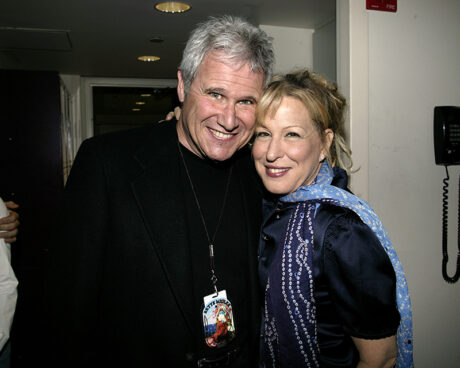
Morse was just as busy in the aughts, working for Shania Twain, Andrea Bocelli, Eagles, Prince, and Usher, among others. Most recently he’s worked again with Streisand, Derek Hough, Dancing with the Stars, and some more Vegas shows. “I try to never lose touch that it is the artist that the audience comes for, that it is them the audience wants to watch and listen to,” he says, reflecting on his successful career so far. “Other than that, I’ve been fortunate and lucky as hell to work with great people and even work with not-so-great people.”

Morse himself has a well-earned reputation for being great to work with, due largely to his ability to keep his ego in check and his strong work ethic. “I go into everything with a sense of humility and a self-imposed ‘check’ on my self-confidence,” he adds. “I have to go in with eyes and ears wide open. It’s important to keep in mind that this is the performer’s livelihood. Artistically, it is what they live for and care about. I’m there to transmit their music and lyrics visually to the audience, and I consider this a huge responsibility.”
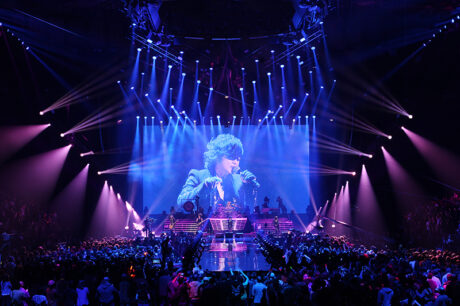
He’s never been impressed by size alone: “Many times I’ve walked into a venue and viewed a very large lighting rig, only to be disappointed in its actual implementation during the performance. I can more readily recall the startlingly small lighting rigs that eventually revealed a stunningly effective design. The size of the lighting rig isn’t the issue—and those who know me I’m sure are giggling [at that statement]…”
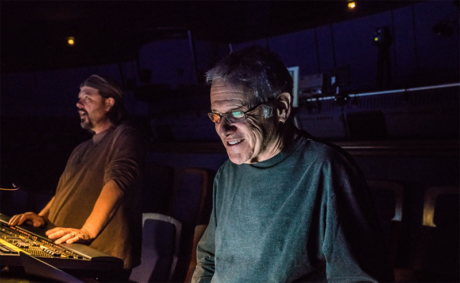
Morse says he has two favorite parts to his job. “I always look forward to the first time we run the cues in real time with rehearsals. It’s a feeling that we’ve crossed over the first major hump and can now view our work with bodies on stage and music at volume.” His second favorite moment is the first actual show. “The audience is there, all elements are running at full tilt, and we feel the appropriate response from the audience to the entire package. That is electric!”
On Peter Morse – Words from his Many Associates
Michael Tait (who was the first to win the Parnelli Visionary Award in 2008) – “Only an artist with exceptional talent can sustain a career for over 50 years, and Peter Morse is such an artist. He is an artist in the use of light. His lighting is innovative yet tasteful. Cutting edge yet never overbearing.” Tait says they first worked together in the early 80’s on Kenny Rogers, Dolly Parton, and John Denver. “Next was Michael Jackson, a true test for any designer, and Peter excelled as usual. I was always secure in the knowledge that Peter would make the sets that I built look magic and create an overall environment that could not fail to draw in the audience. He is a lighting designer’s lighting designer.”
Tour Manager Bernie Boyle – “The thing that makes him standout is his ability to never be overwhelmed by a project. He does not rattle easily and is a calming influence—not always common in our industry.”
Designer Bruce Rodgers –“Early in my career, I was blessed to be on two major tours with Peter: Ricky Martin’s Livin’ La Vida Loca and Madonna’s Drowned World Tour. He helped me learn how to design with light, and he always brought a world-class eye to every design detail with uncommon style and friendly ease.”
Mark “Springo” Spring, production manager for Paul McCartney and Parnelli Lifetime honoree – “He is one of the smartest MOFO’s in the business. He and I had Ricky Martin together, and he made this giant ‘hoop’ of lights downstage that while in everybody’s way, made the show look elegant. Then came Madonna, who he also made look good. He is a trooper who deserves these accolades.”
Production Manager Chris Lamb – “Peter Morse is a living legend. He was one of the first real lighting designers. We worked together on many tours over the years, and never with easy-going artist or directors. He never lost his cool and was always a true professional. He continues to do amazing lighting.”
Parnelli Awards Executive Producer Terry Lowe – “Peter’s remarkable talent has had a great influence on scores of other designers as he lit Lionel Richie, Madonna, Michael Jackson, and Streisand at the pinnacles of their careers. These four artists alone are known for their extreme high standards, and Peter met and surpassed those standards. His unique background, which includes starting as a recording and performing artist himself, propelled him to be a Visionary in our industry. He’s a legend to all lighting designers.”
PLSN Editor Emeritus and LD Nook Schoenfeld –“Peter Morse is the only one I know who went from being in a group [The New Christy Minstrels] in the 60s, to becoming a Lighting and Production Designer for two different members of that group when they went solo [Kim Carnes and Kenny Rogers]. He became a Lighting Designer in the 60s when no other band was carrying one where he was also a road manager and an accountant. He is the guy who brought rental lighting packages into the showrooms of Las Vegas when nobody had thought of using anything but the house system.”
Peter Morse will be honored with the Parnelli Visionary Award at the 20th annual ceremony. The event is set for June 3 at the Anaheim Hilton during NAMM. To reserve your seat (or table), go to www.parnelliawards.com/reservations.
More Peter Morse lighting projects. Photos: Todd Kaplan
